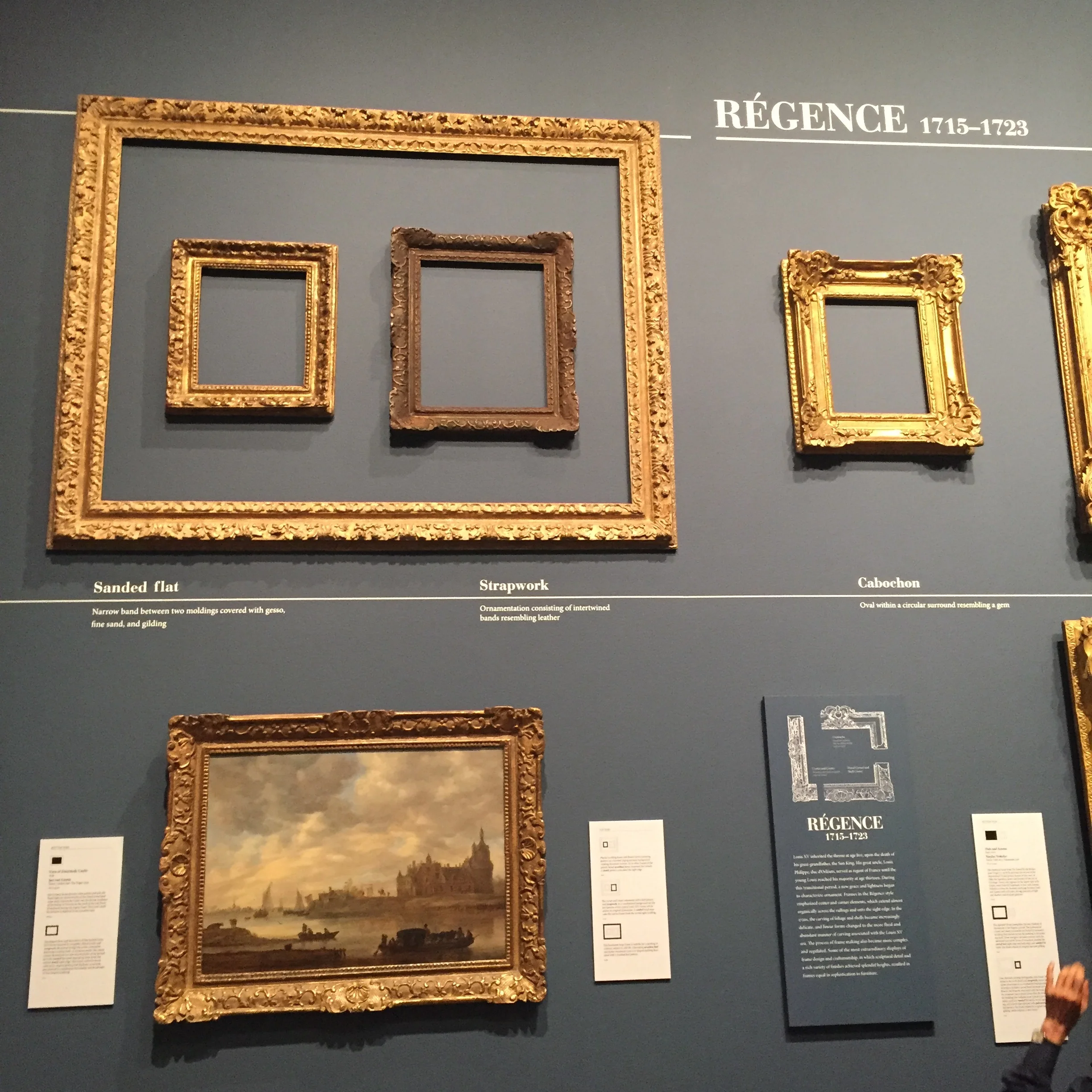Carved and gilded French Trophy Frame designed by Gilles-Marie Oppenard
A trip in early December 2015 to The Getty Center in Los Angeles provided an opportunity to see some of the finest examples of 17th and 18th Century French frames. I’d reached out to colleague and Getty frame conservator Gene Karraker to make a visit and he was a gracious host. It’s a terrific show and I am thrilled to have been able to see it. I was unexpectedly delighted to see my friend and colleague Lynn Roberts of The Frame Blog (London) there to join us, a special surprise arranged by friends and frame colleagues Rob and Barbara Markoff of San Diego.
The exhibition "Louis Style French Frames 1610-1792” (September 15, 2015- January 3, 2016) surveyed frame design in France when frame design, carving and gilding were at their zenith. While I am offering here my own cursory impressions and observations of the show, the Getty website has a feature on the exhibition that provides a valuable download-able pdf of all label text with in-depth information on each era and individual frame . Further excellent reading can be found in the 2009 book ‘Looking at European Frames: A Guide to Terms, Styles, and Techniques’ by D. Gene Karraker.
The exhibition is in one high-ceilinged room with both an upper and lower row of frames and I especially appreciated being able to see the range of stylistic evolution from LOUIS XIII to LOUIS XVI frames. It is fascinating to see the use of profiles, forms and ornament as they reflected changing taste in decoration and style. Beautifully patterned Louis XIII frames reflect the Italian influence of the Italian queens Caterina de Medici (reigned 1547-1549) and Marie de Medici (reigned 1610 and mother and regent for the young Louis XIII) and the craftsmen they brought with them.
Louis XIII frames reflect the influence of Italian design and craftsmanship.
Increasingly ornate frames during the Louis XIV period even occasionally incorporated the sunflower motif- the symbol of the ‘Sun King’.
Note the sunflower motif on the corners of the frame at upper left.
During the transitional Regence period (1715-1723) ‘center and corner’ frames became increasingly popular and lavish surface decoration with nuanced surfaces prevailed.
Center-and-corner frames became increasingly popular during the Regence period.
The most ebullient designs are embodied in the Louis XV style frame when exuberant Rococo ornament, swept sides and pierced carving were utilized to create frames of astonishing beauty and complexity.
Swept sides and pierced carving are typical of Louis XV frames.
Note the reparure ('recutting') in the surface.
The surfaces are further embellished with recutting (reparure) a method of incising additional detail into the frame surface. The decoration is as delicate as fine jewelry.
The survey concludes with Louis XVI style frames that embody the restraint of Neoclassical forms. Straight edges and linear geometric patterns celebrated antiquity and the recent archaeological discoveries of Herculaneum and Pompeii. The fluted cove style frame first appeared and gilded surfaces used the interplay of matte and burnished surfaces to striking effect.
The final wall includes a didactic section showing tools of the carver and gilder, and images from pattern books and Diderot’s Encyclopedia.
Tools, pattern books and images from Diderot's Encyclopedia.
There’s even a small tablet that allows you to look at four different artworks in several different frame styles to get a feel for what works and what doesn’t. It’s a wonderful glimpse into the artistry of gifted craftsmen.









